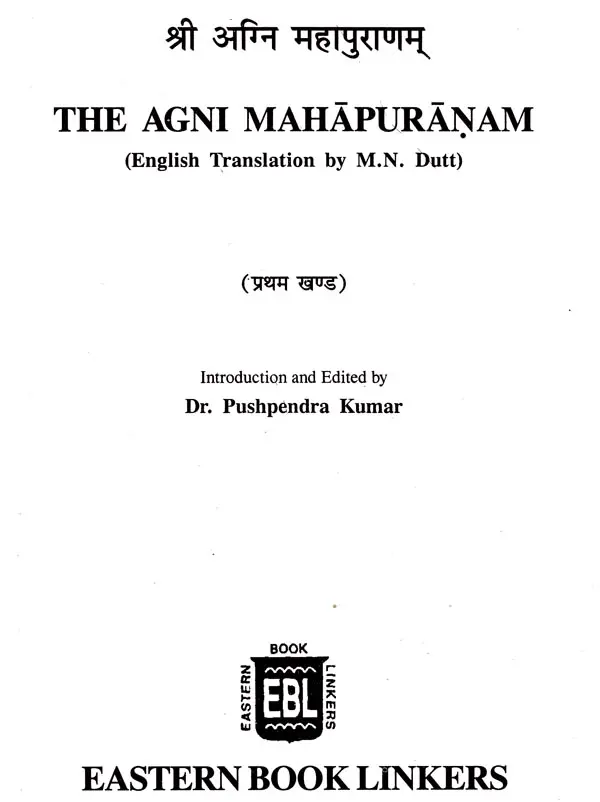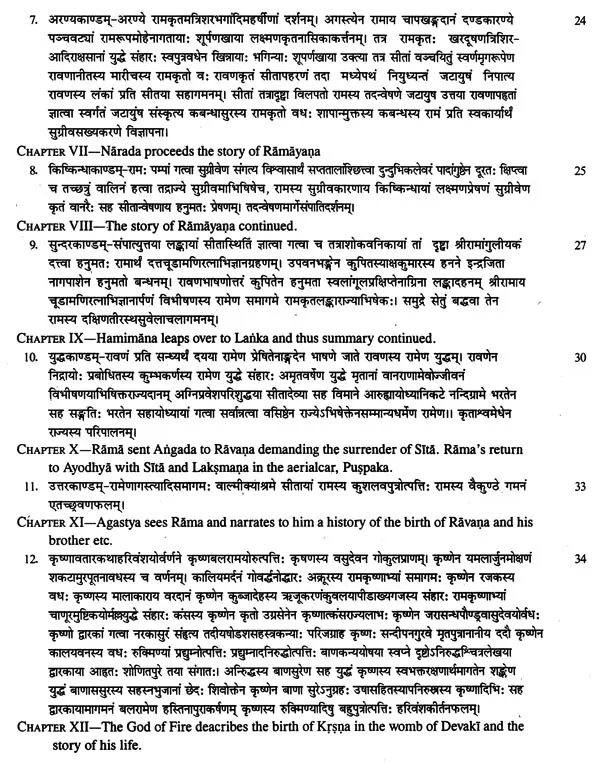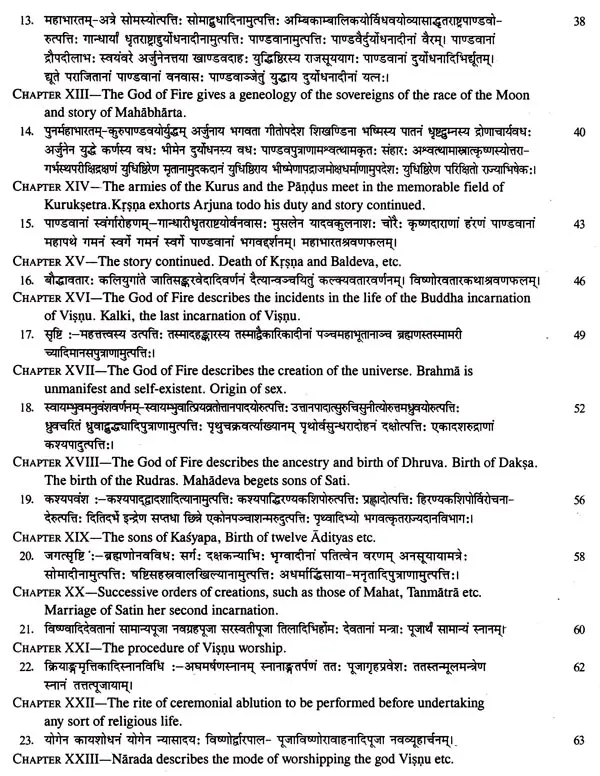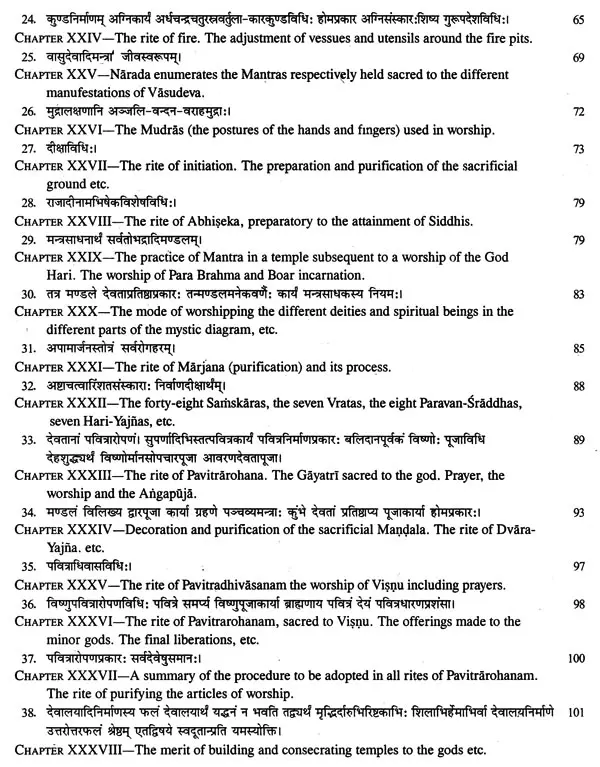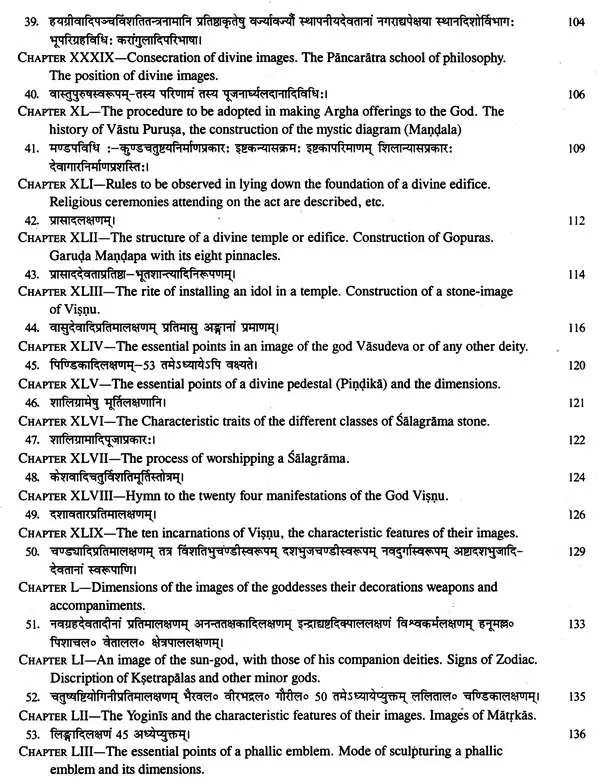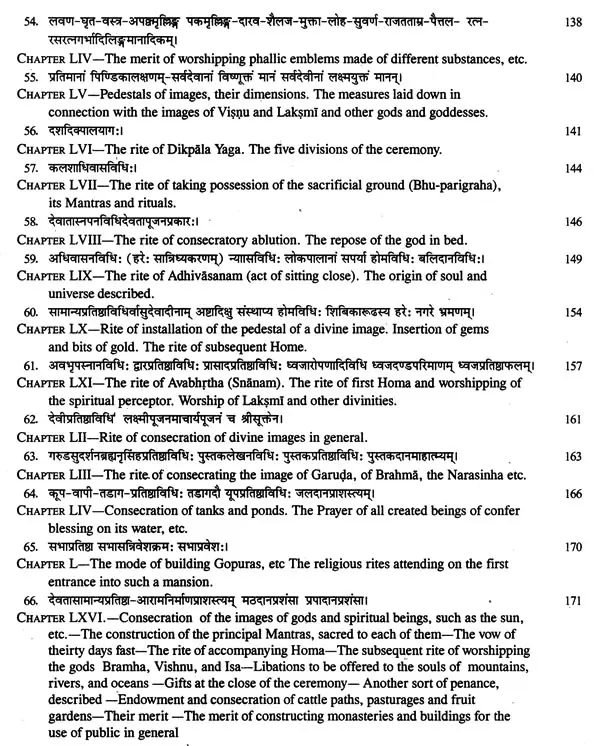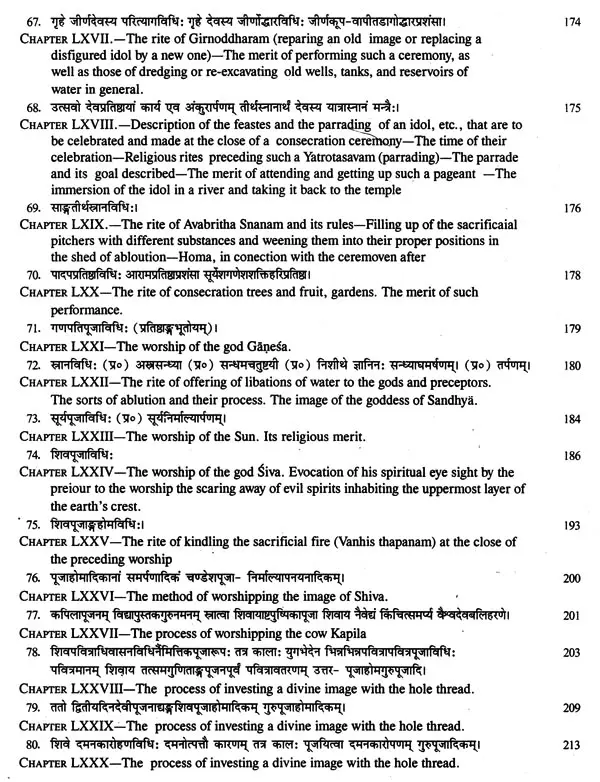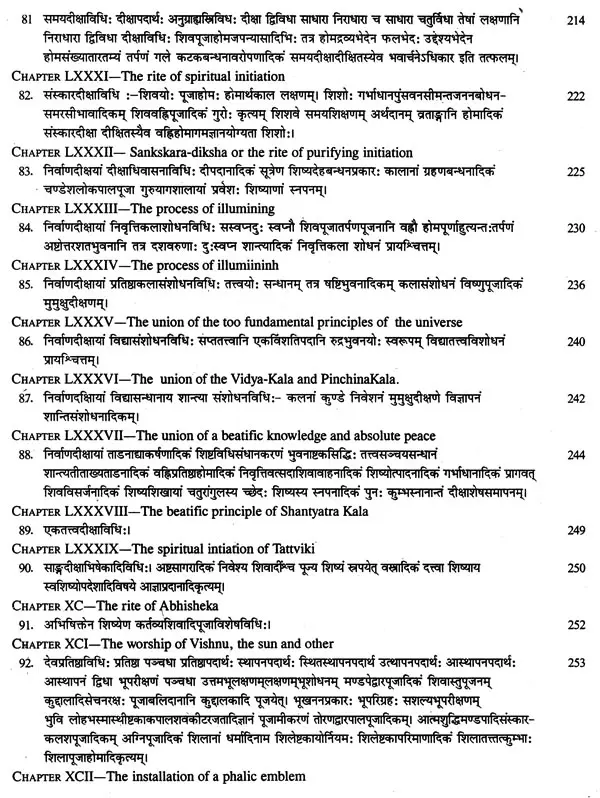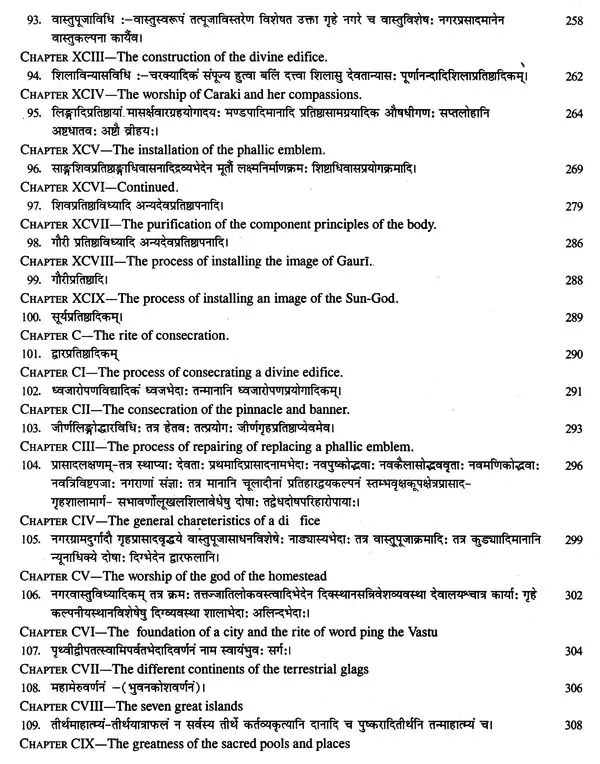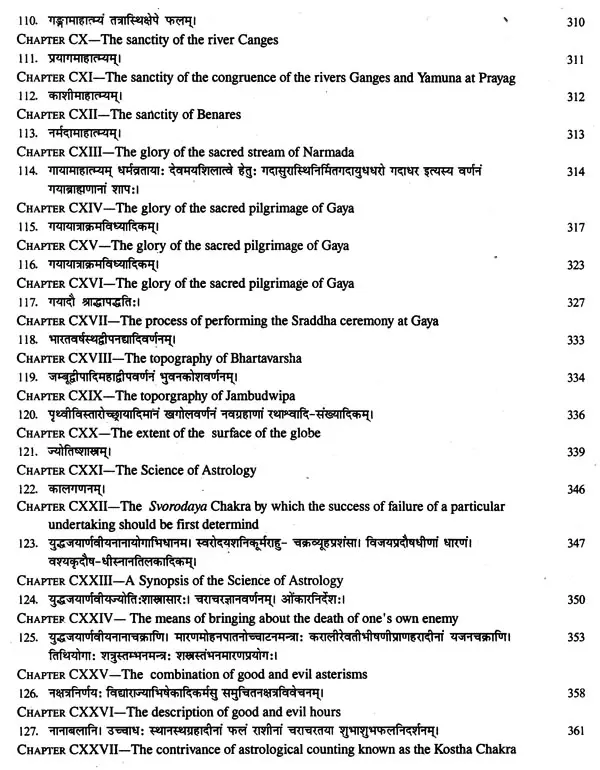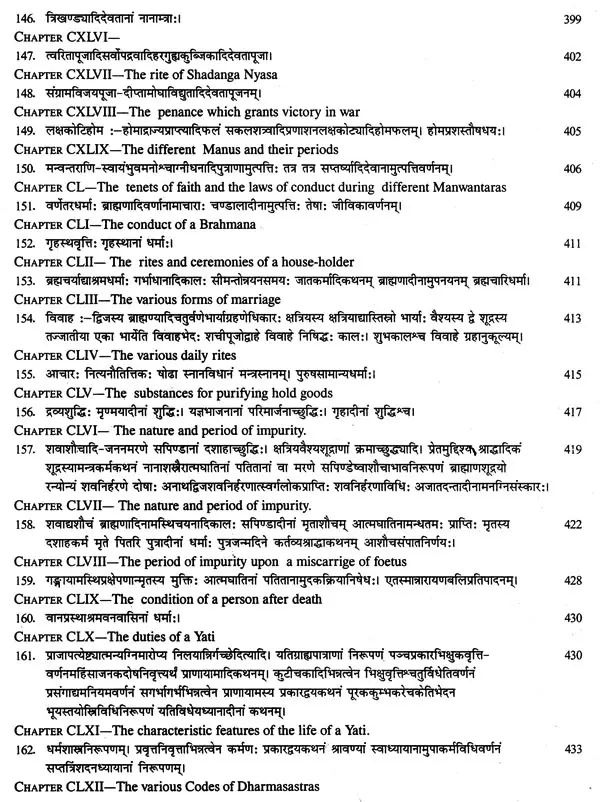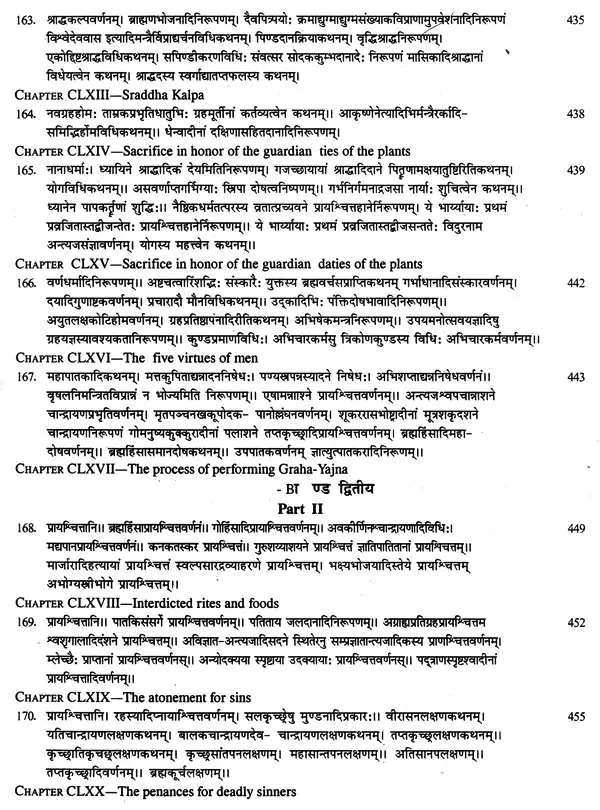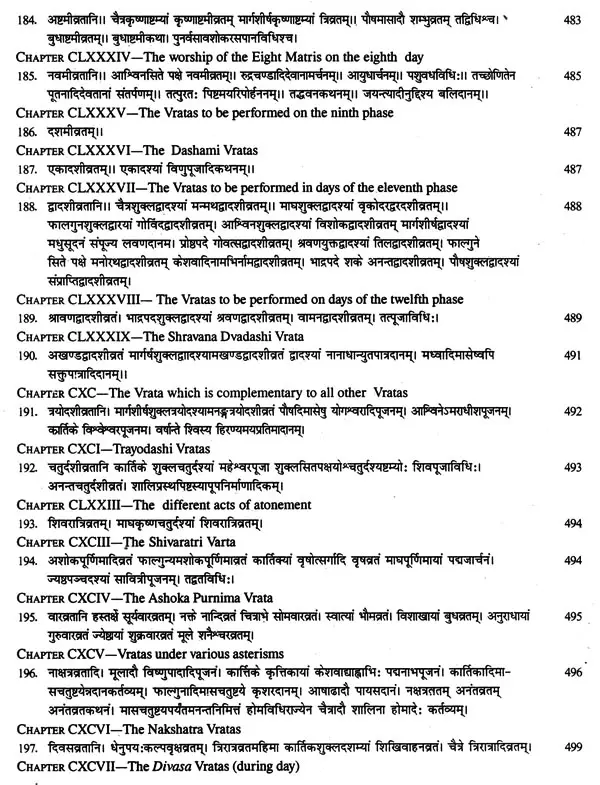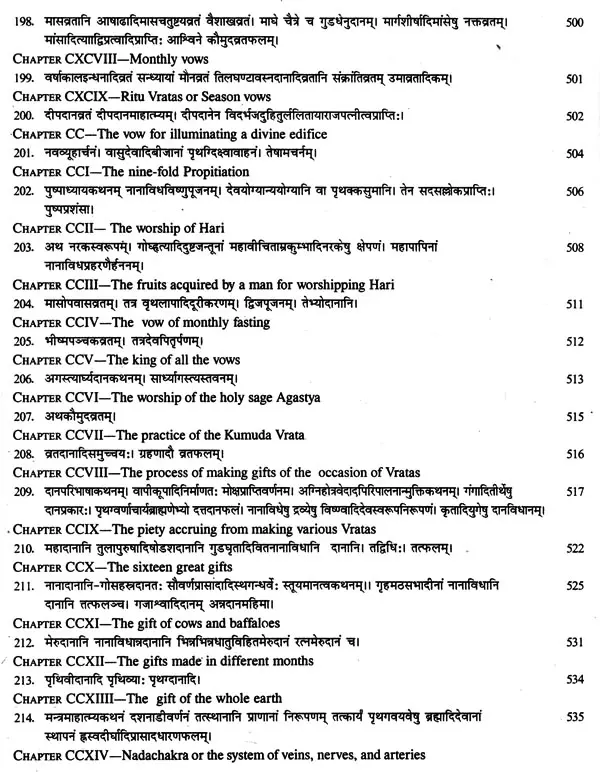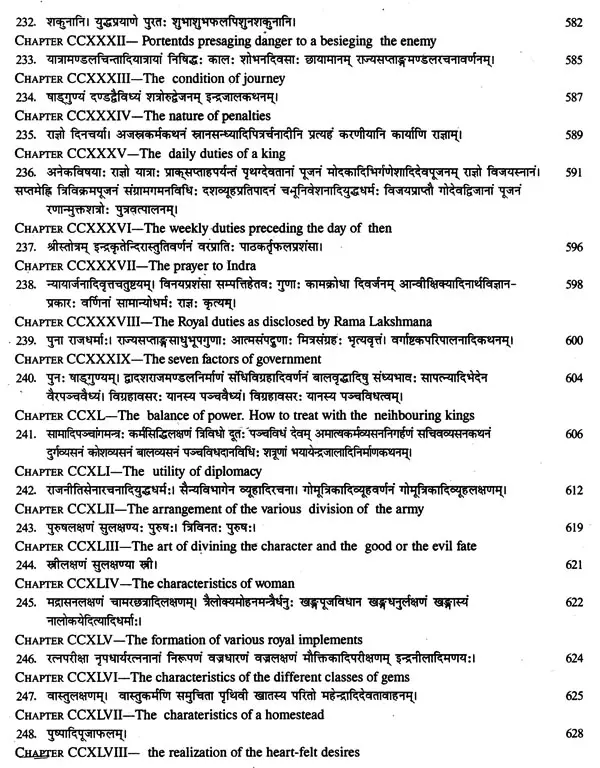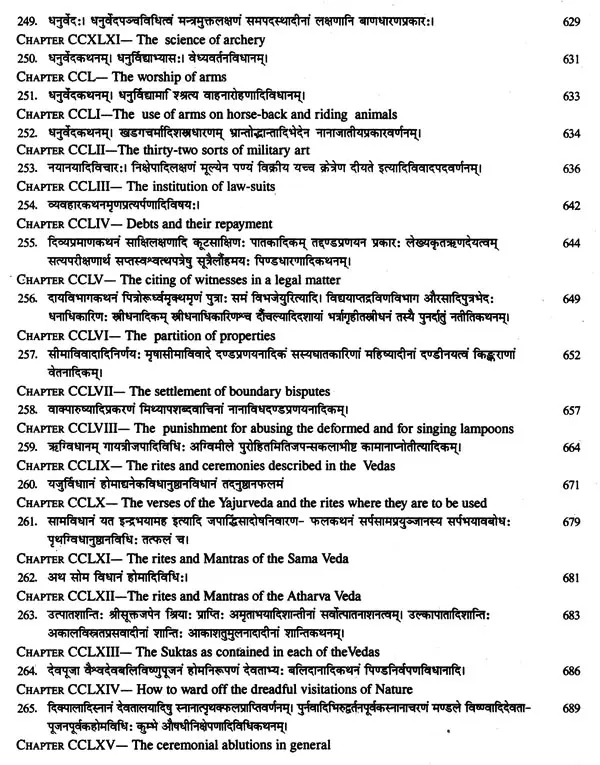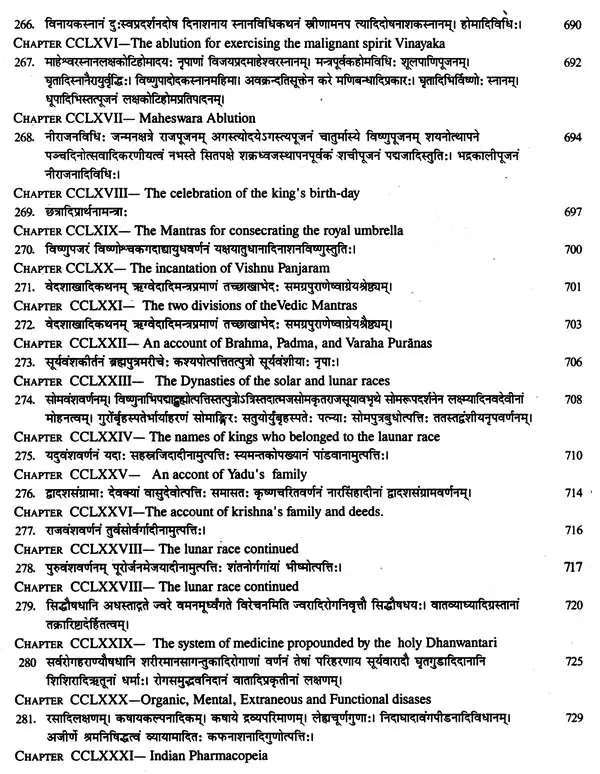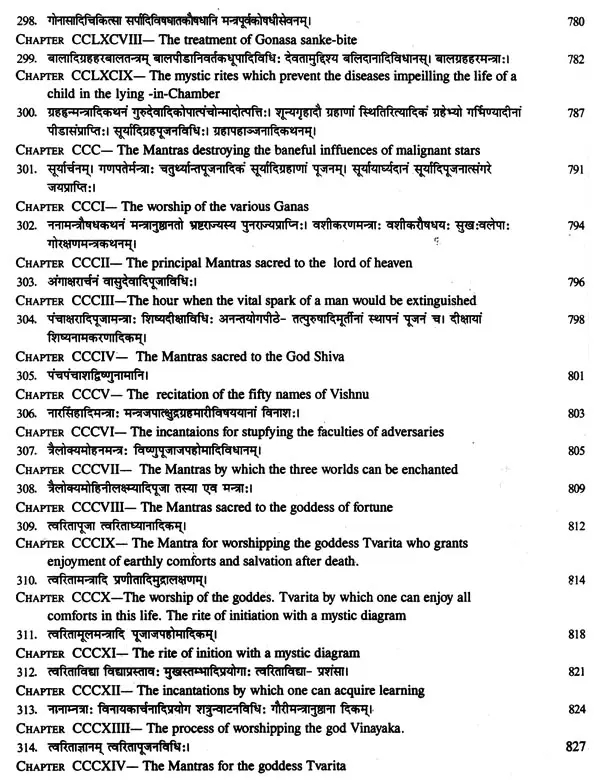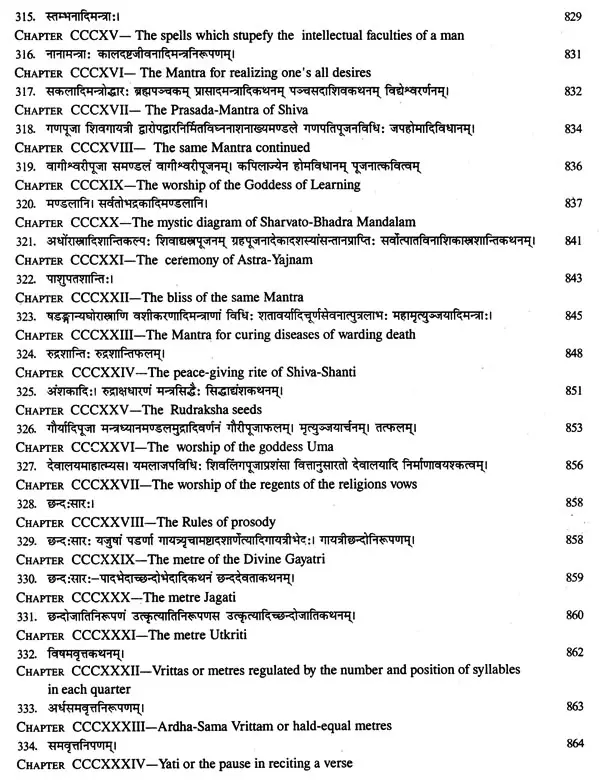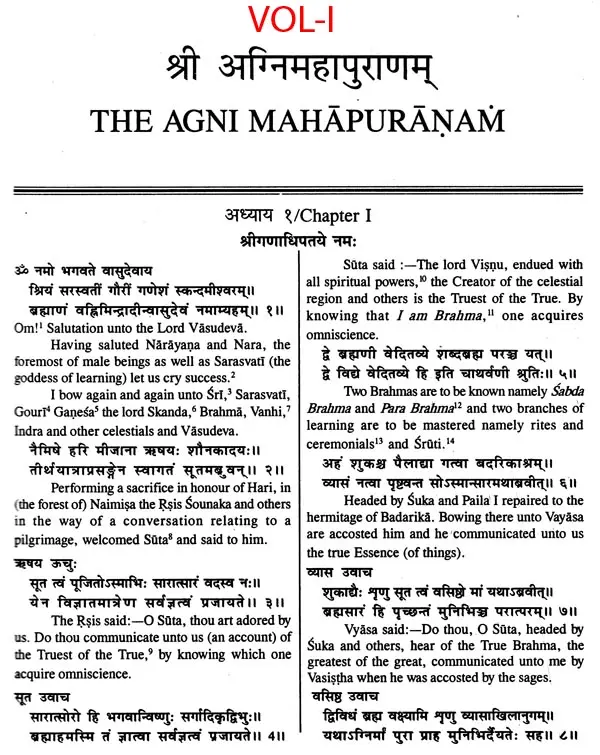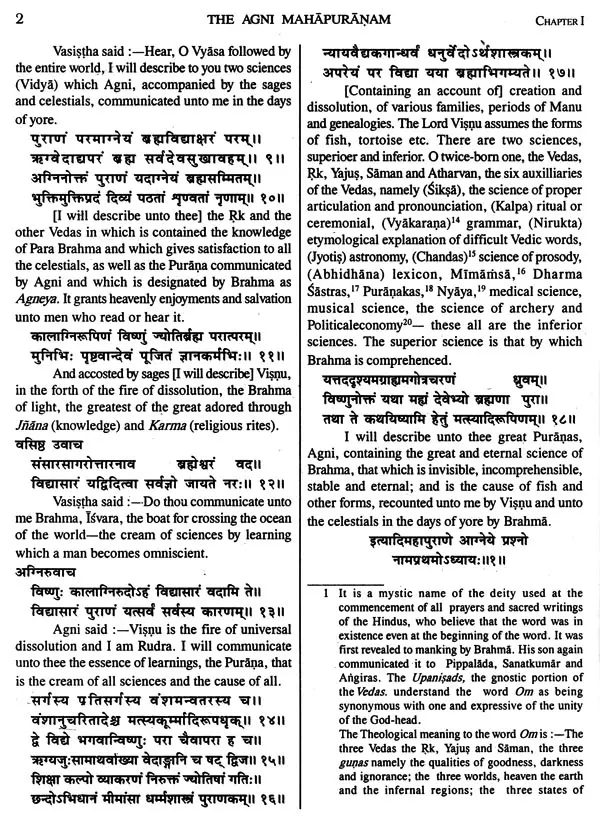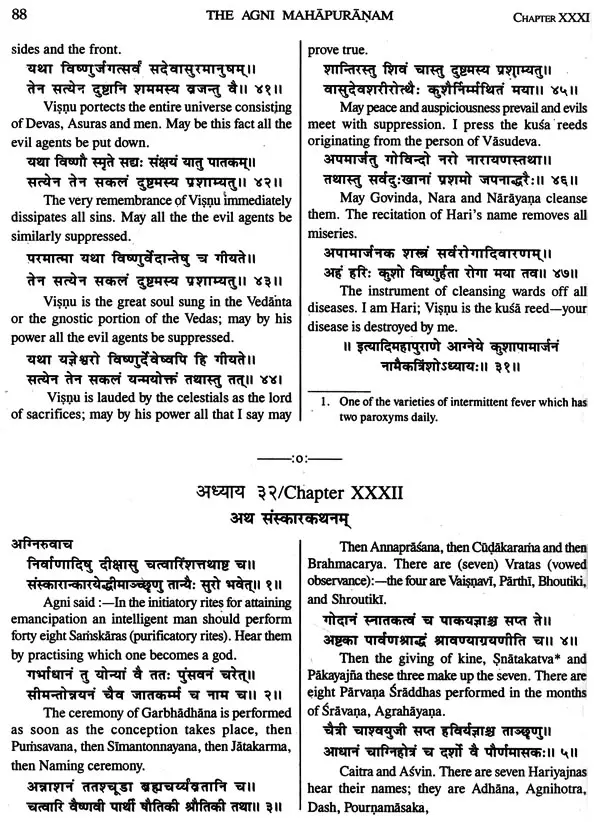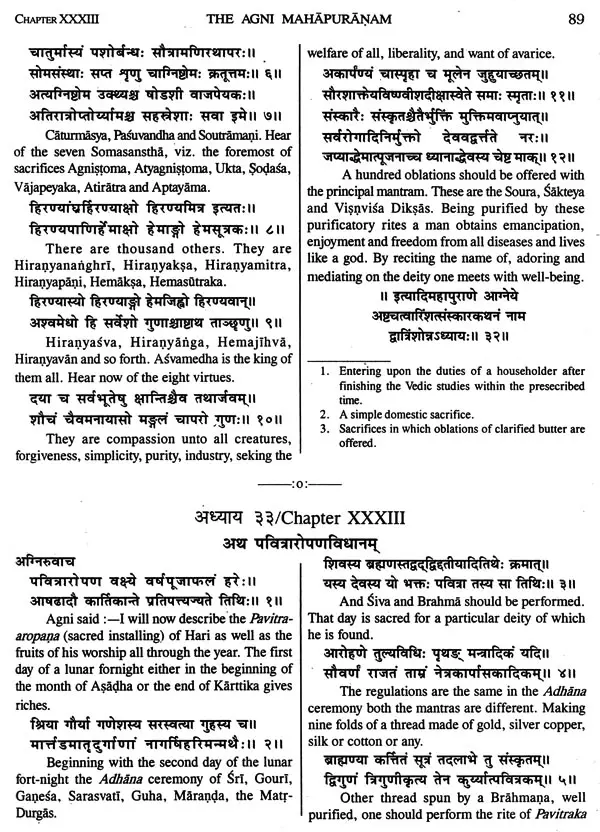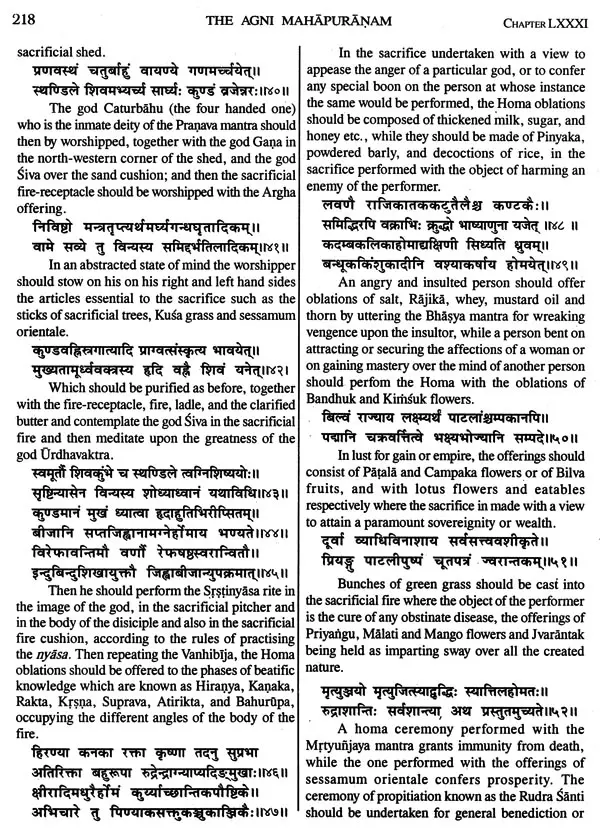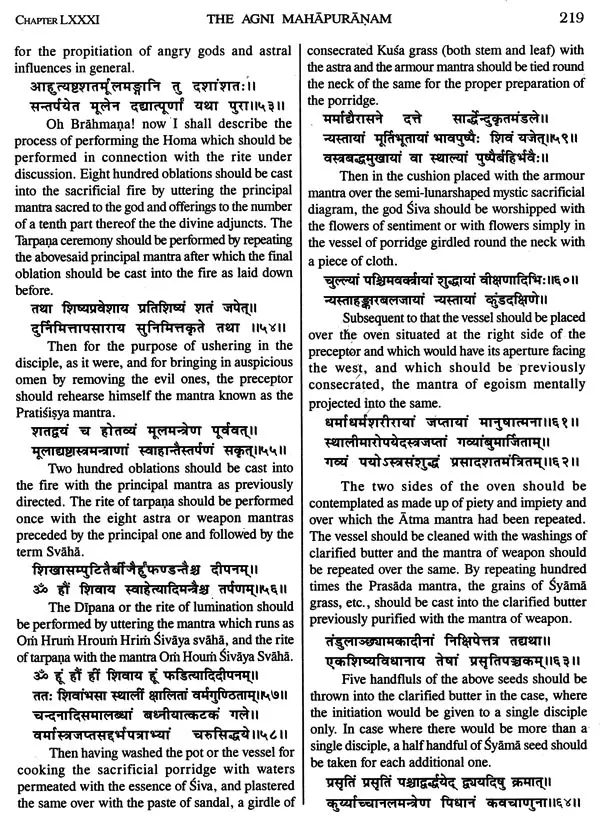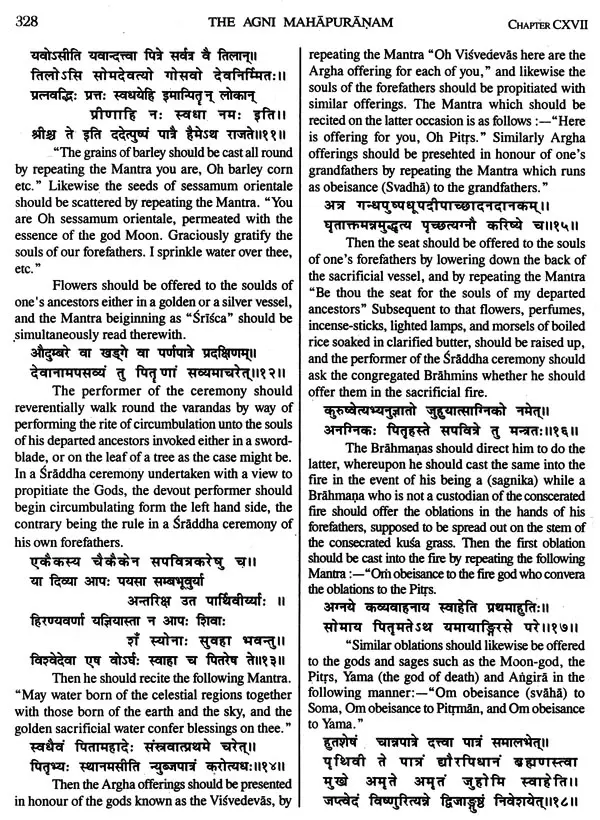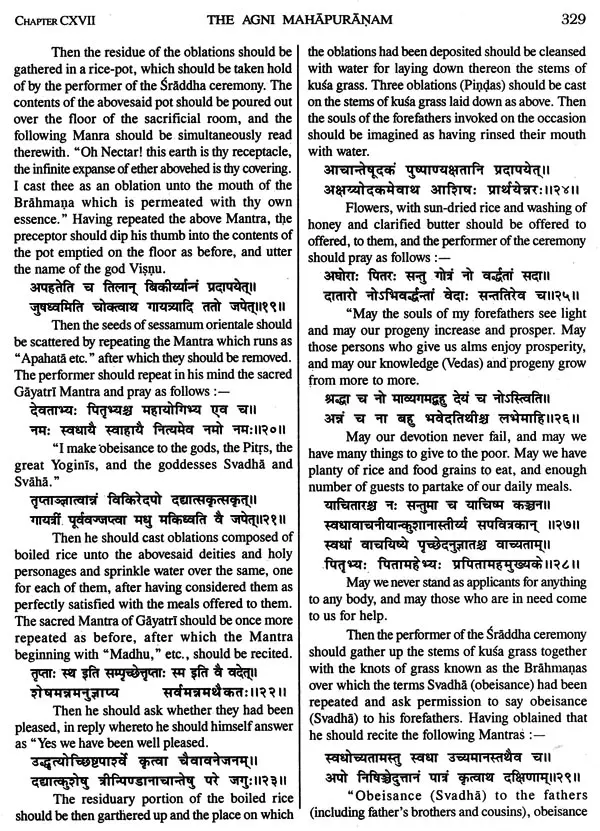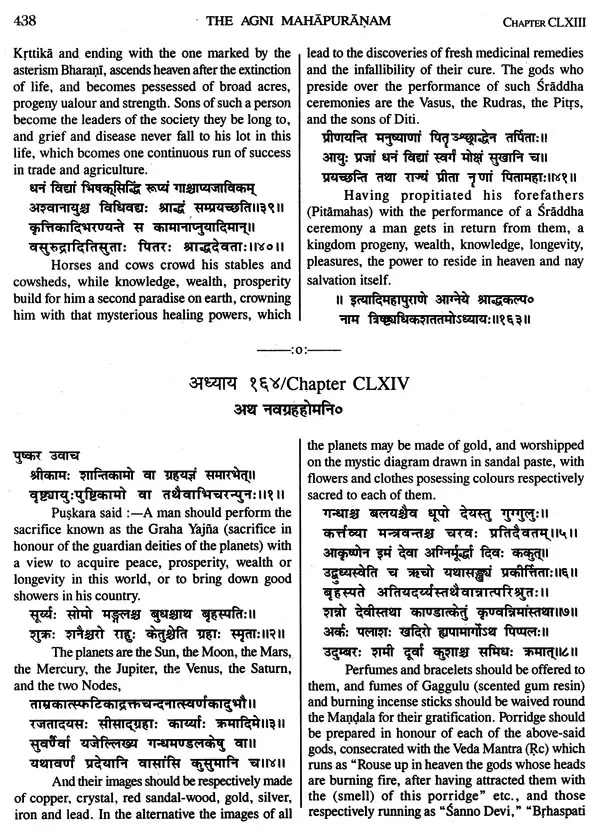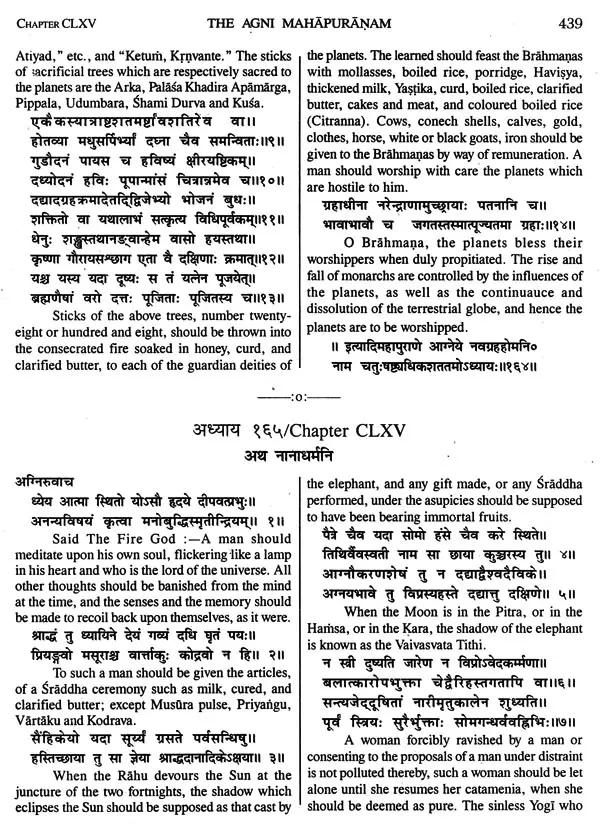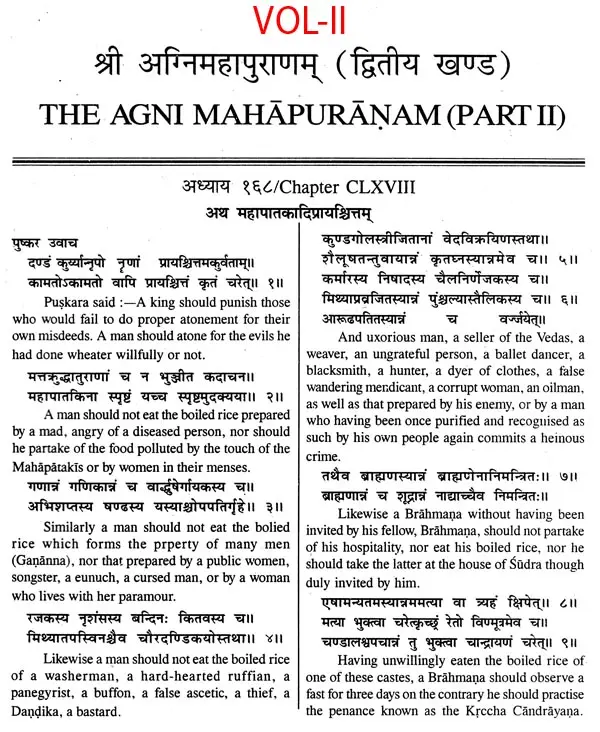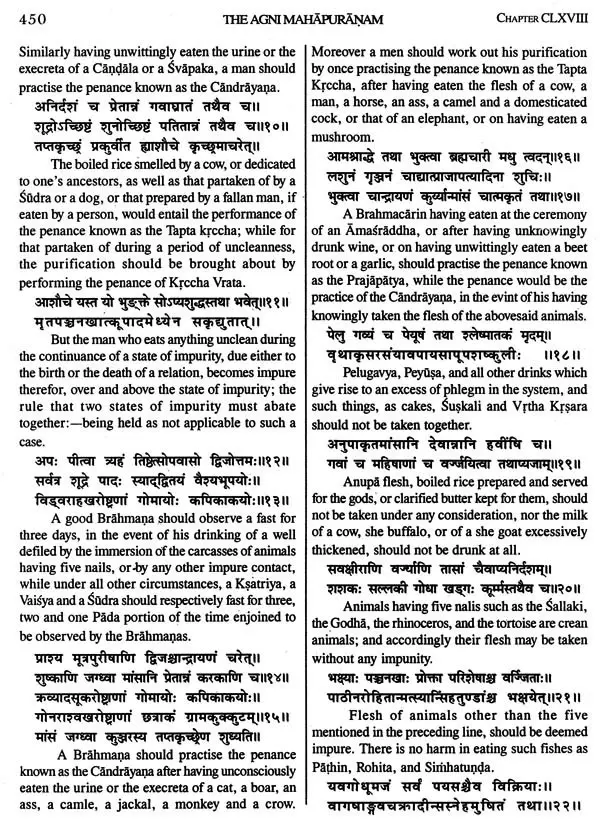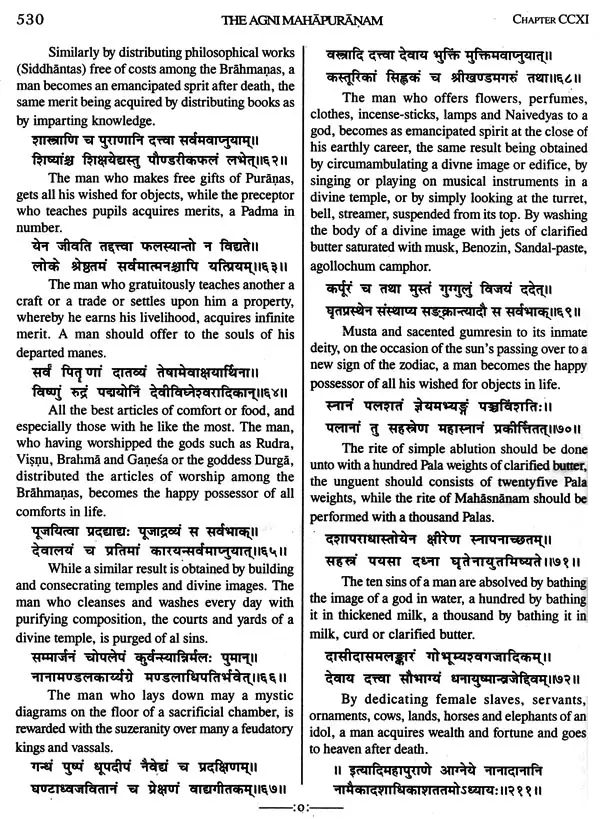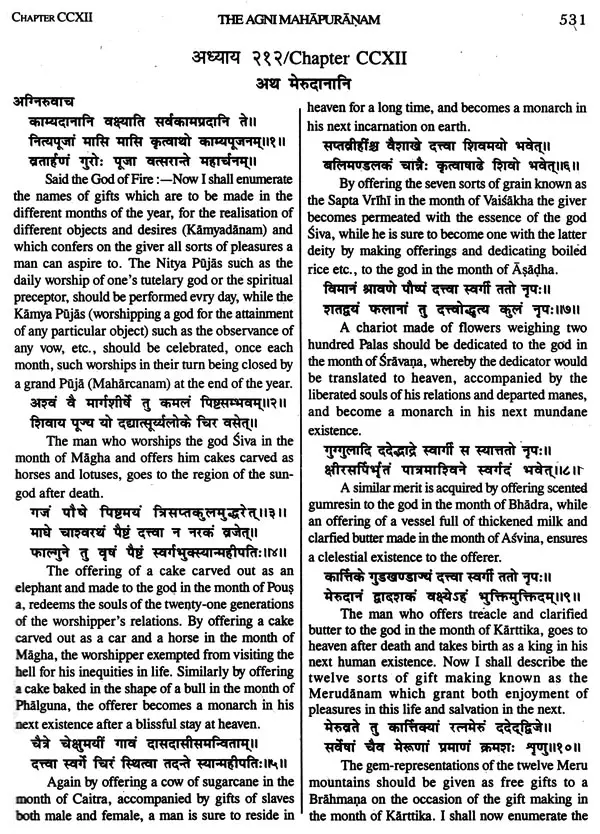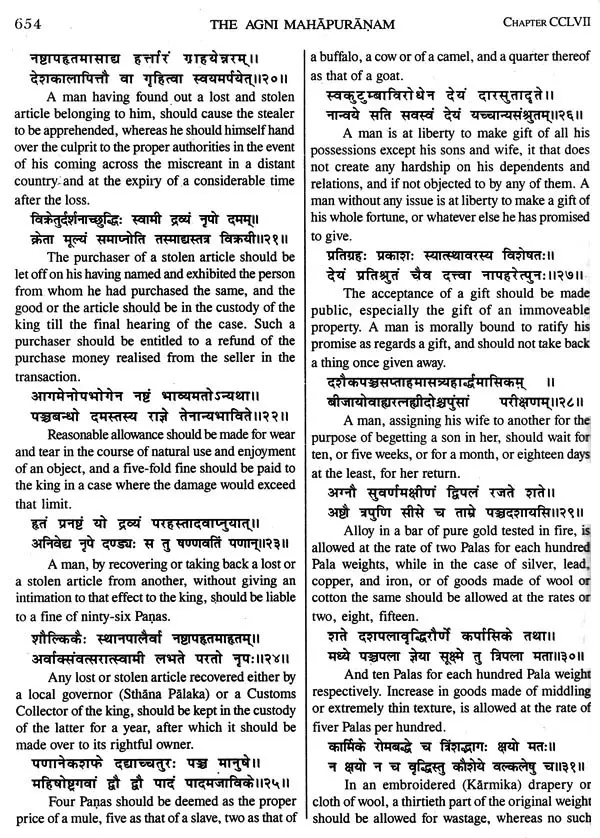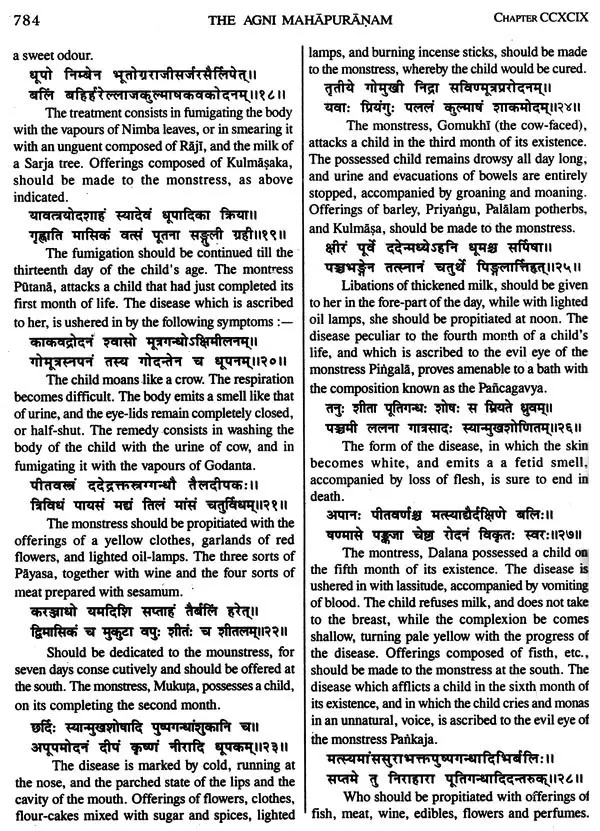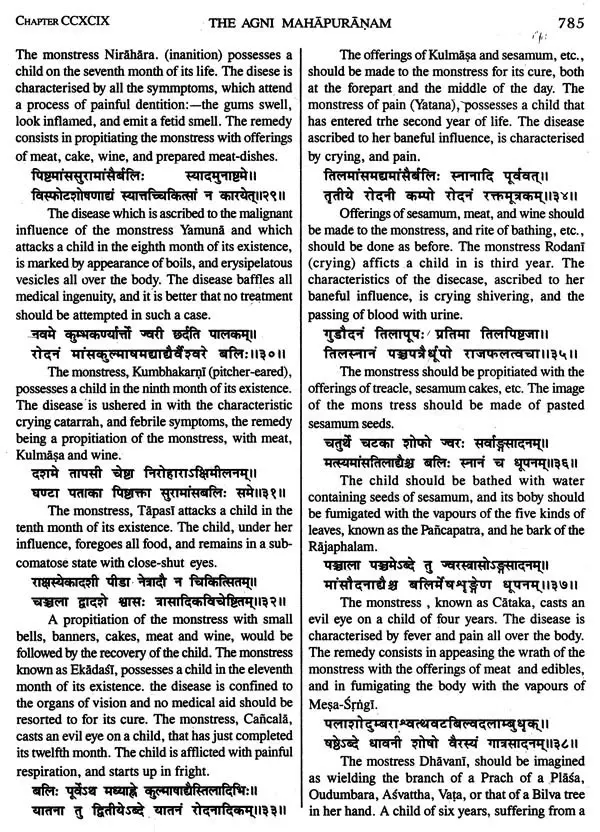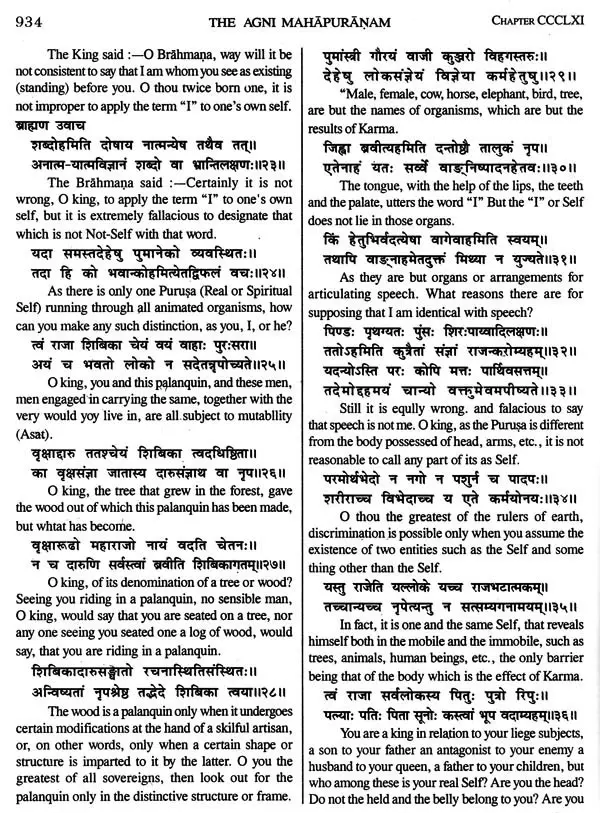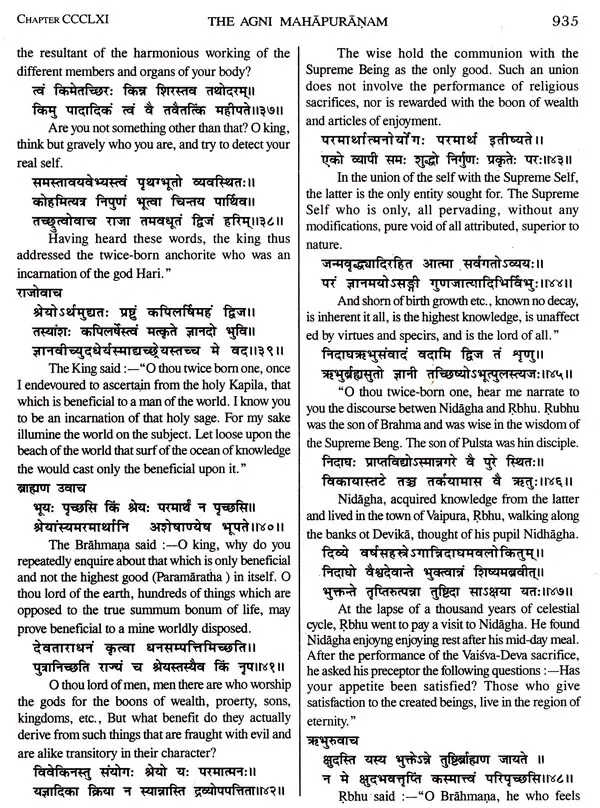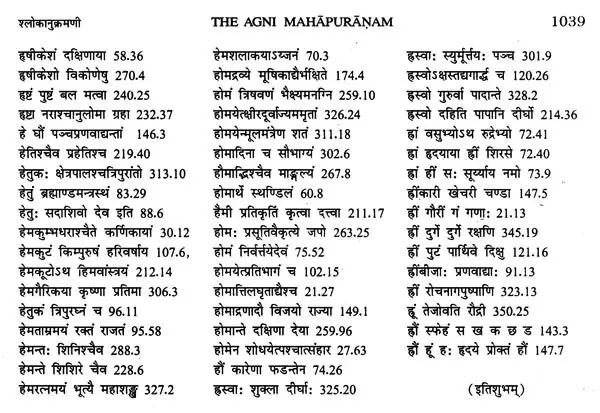
अग्निमहापुराणम्- The Agni Mahapuranam: Text and English Translation by M.N. Dutt (Set of 2 Volumes)
Book Specification
| Item Code: | UAI129 |
| Author: | Pushpendra Kumar |
| Publisher: | Eastern Book Linkers |
| Language: | Sanskrit Text with English Translation |
| Edition: | 2006 |
| ISBN: | 9788178540870 |
| Pages: | 1038 |
| Cover: | HARDCOVER |
| Other Details | 10.00 X 7.50 inch |
| Weight | 2.29 kg |
Book Description
The different works known by the name of Puranas (or old) are evidently derived from the myth-heroic stage of Hindu belief The Puranas are commonly stated to be eighteen in number It is said there are also eighteen Upa-Puranas or Minor Puranas--but the names of all these are not found. The principal eighteen Puranas are Brahma, Padma, Visnu, Siva, Bhagvata, Näradiya, Märkandeya, Agni, Bhavisya, Brahma Vaivarta, Linga, Varáha, Skanda, Vamana, Kurma, Matsya, Garuda and Brahmanda.
All these Puranas are classed into three groups according to the qualities which prevail in them. The Matsya Purana remarks that those in which glory of Hari or Vișnu prevails are Sattvika, those in which the legends of Agni of Siva predominate are Támasa and those which dwell most on the stories of Brahma are Rajasa.
The Agni Purana, that is the cream of all sciences and the cause of all (13) Containing an account of] creation and dissolution, of various families, periods of Manu and genealogies. The Lord Visnu assumes the forms of fish, tortoise etc. There are two sciences, superior and inferior. O twice-born one, the Veda, Rik, Yajus, Säman and Atharvan, the six auxilliaries of the Vedas, namely (Siksā), the science articulation and of proper pronunciation, (Kalpa) ritual or ceremonial, (Vyakarana) grammar, (Nirukta) etymological explanation of difficult Vedic words (Jyotis) astronomy, (Chandas) science of prosody, (Abhidhāna) lexicon, Mimämsä, Dharma Sastras, Nyaya, medical science, musical science, the science of archery and Political economy these all are the inferior sciences. The superior science is that by which Brahman is comprehended (14-17). I will describe unto thee the great Purana, Agni, containing the great and eternal knowledge of Brahman, that which is invisible, incomprehensible, and eternal.
In the general treatment of the subjects the author, however, does not stick to the five principal topics which should constitute a Purana. He even loses sight of the two fold knowledge. divine and secular set forth by him originally in the introduction. He has introduced a number of topics, useful to men, without any system or method, His work is more like an Encyclopedia, containing a variety of useful topics bearing on later Sanskrit learning.
The early chapters of this Puräna describe the Avatāras, and in those of Rama and Krsna, avowedly follow the Ramayana and Mahabharata. A considerable portion is appropriated to instructions for the performance of religious ceremonies, many of which belong to the Tantrik rituals and are apparently transcribed from the principal authorities of that system Some belong to mystical forms of Siva worship, little known in Hindustan, though perhaps, still practiced in the south. One of these is the Diksa or initation of a novice; by which numerous ceremonies and invocation in which the monosyllables constantly, the mysterious of Tantras are disciple, is transformed into a living personation of Siva, and receives, in that capacity the homage of his Guru.
On the final analysis, the Agni Purana shows that it owes much to the various branches of literature of early medieval times and is especially indebted to the four Vedas, Upanişads, Smrtis, Vişnudharmottara and the Harivamsa Puranas; the Visnu and the Matsya Puranas, the two epics, the Ramayana and the Mahābhārta; the Hayasirşa, the Gītā, the Samkhya, the Vedänta, the Samhita of Caraka and Suśruta and Näradiyaśikṣā monoyllabic lexicography of Ksapanaka, the Pingalasutras, the lexicon of Amarsimha, Bharata, Bhämaha, Dandin etc. Vaiṣṇava and Saivāgamas. Thus Agni Purana presents essence of all branches of knowledge and is an encyclopedia of all that existed.
The Puranas have obtained the name of Panchalakshana because their contents generally embrace five topics namely (1) Primary creation, or cosmogony, (2) secondary creation. (3) genealogy of gods and patriarchs, (4) reigns of the Manus (5) history of the solar and lunar dynasties. The definition does not however necessarily signify that the Puranas exclusively deal with these topics only. On the contrary, every Purana dwells at length on one or more particular subjects and in some, these five primary topics occupy a very subordinate position, Our remark is partcularly applicable to Agni Purana more than three fourths of which have no connection however with the five principal topics. In the introduction Sura describes the subjects of knowledge, and therefore, the subject matter of this Purana, is two-fold namely Pard vidya, sacred knowledge or theology and Apard Vidya, profine knowledge or the arts and sciences known to the people. The subject matter of the Agni Purana is thus described in the Introduction by Wilson.
The Agni Purana, that is the cream of all sciences and the cause of all (13) (Containing an account of creation and dissolution, of various families, periods of Manu and genealogies. The Lord Vishnu assumes the forms of fish, tortoise &. There are two sciences, superior and inferior. O twice-born one, the Veda, Rik, Yajush, Saman and Atharvan, the six auxilliaries of the Vedas, namely (Siksha). the science of proper articulation and pronounciation, (Kalpa) ritual or ceremonial, (Vyakarana) grammar, (Nirukta) etymological explanation of difficult Vedic words (Jyotish) astronomy. (Chhandas) science of prosody, (Adhidhina) lexicon, Mimänsä, Dharma Sastras, Nyaya, medical science, musical science, the science of archery and Political economy- these all are the inferior sciences. The superior science is that by which Brahman is comprehended (14-17).1 will describe unto thee the great Purana, Agni, containing the great and eternal science of Brahman, that which is invisible, incomprehensible, stable and eternal.
The general character
In the general treatment of the subjects the author, however, does not stick to the five principal topics which should constitute a Purâna. He even loses sight of the two fold knowledge, divine and secular set forth by him originally in the introduction. He has introduced a number of topics, useful to men, without any system or method, His work is more like an Encyclopaedia, containing a variety of useful topics bearing on later Sanskrit learning.
The contents of this Purana clearly show that it has no sectarial leaning. It impartially treats of Vaishnava, Saiva, and Sakta forms of worship. It is more a compendium of Sanskrit learning than the advocacy of any particular from of religion. It classed among the Tamasa or the delusive division of the Puranas.
"From this general sketch of the Agni Purâņa it is evident that it is a compilation from various works; that consequently it has no claim in itself to any great antiquity, although from the absence any exotic materials, it might be pronounced earlier. From the absence also of a controversial or sectarian spirit, it is probably anterior to the struggles that took place in Eth and 9th centuries of our era between the followers of Siva and Vishnu. As a mere compilation however, its date is of little importance, except as furnishing a testimony to that of the materials of which it is composed. Many of these may pretend no doubt to considerable antiquity, particularly the legendary accounts of the Avataras, the section on regal policy and judicature and chapters. For there can be little doubt that the Purana, and comprehending such incongrounx admixtures, is not the entire work as it at first stood It is not unilkely that many chapters were supplied about 8 or 9 centuries ago, a few perhaps even later, to fill up the charms which time and accident had made in the original Agneya Purana
Wilson remarks in his introducation to the Vishnu Purâna: The encyclopaedical character of the Agni Purana, as it is now described, excludes it from any legitimate claims to be regarded as a Purina, and proves that its origin cannot be very remote. It is subsequent to the Itihasas, to the chief work on grammar, rhetoric, and medicine, and to the introduction of the Tantrik worship of Devi. When this latter took place, is yet far from determined but there is every probability that it dates long after the beginning of our era.
The materials of the Agni Purana are, however, no doubt, of some antiquity. The medicine of Susruta is considerably older than the ninth century, and the grammar of Panini probably preceeds Christianity. The chapters on archery and arms, and on regal administration, are also distinguished by an entirely Hindu character and must have been written long anteror to the Mohamedan invasion So far the Agni Purana is valuable, as embodying and preserving relics of antiquity, although compiled at a more recent date.
The early chapters of this Purana describe the Avataras, and in those of Rama and Krishna, avowedly follow the Ramayana and Mahabharata. A considerable portion is appropriated to instructions for the performance of religious ceremonies, many of which belong to the Tantrik rituals and are apparently transcribed from the principal authorities of that system. Some belong to mystical forms of Siva worship, little known in Hindusthan, though perhaps, still practised in the south. One of these is the Diksha or initation of a novice, by which numerous ceremonies and invocation in which the mysterious monosyllables of Tantras are constantly, the disciple is transformed into a living personation of Siva, and receives, in that capacity the homage of his Guru.
It is extremely difficult to find out exactly the period when this encyclopedic work was written. It was undoubtedly written long before the Mohamedan invasion. "The chapters, twelfth to fifteenth, in which a synopsis of the Ramayana and Mahabharata is given, conclusively prove that the work was written long after Ramayana and the Mahabharata and are a time when those works had become very old and abstracts of them, were likely to be prized by the general readers. This is the view of Dr Rajendra Lala Mitra Besides many mystic rites, mantras and ceremonies, with which this Purâna teams and many of which are entirely obsolete now and thoroughly inexplicable clearly prove its antiquity. The mantras are generally of the Tantric type. It may be that this work might have been written after Tantric form of worship had been introduced in this country. The likely inference is that this work was written after the Tantric period and as the author wanted to make a compliation of the history. mythology, rites, ceremonials, &c., of the Hindus for the information of the general readers he gave an account of many obsolete rites and mantras that were in vogue in very ancient time Important topics.
**Contents and Sample Pages**
